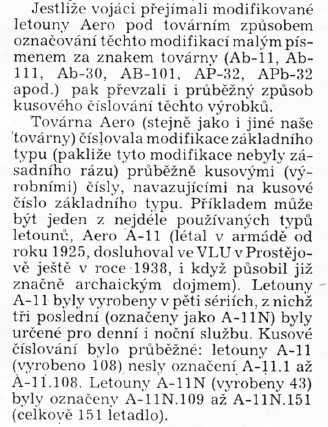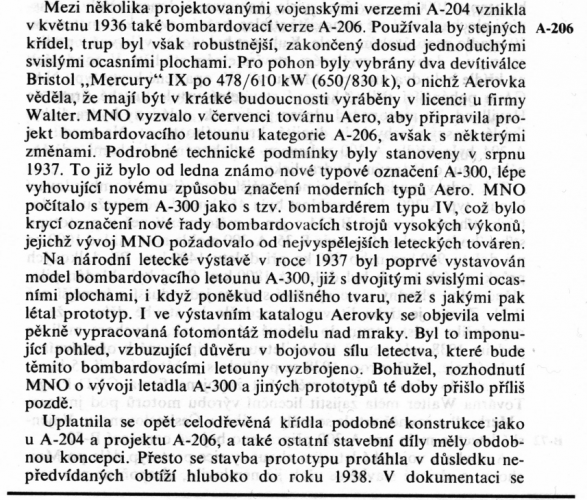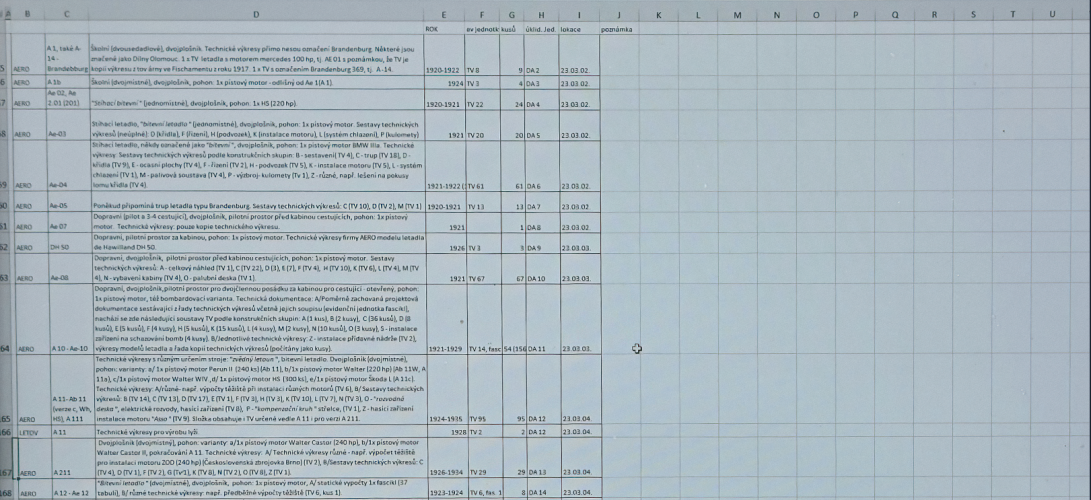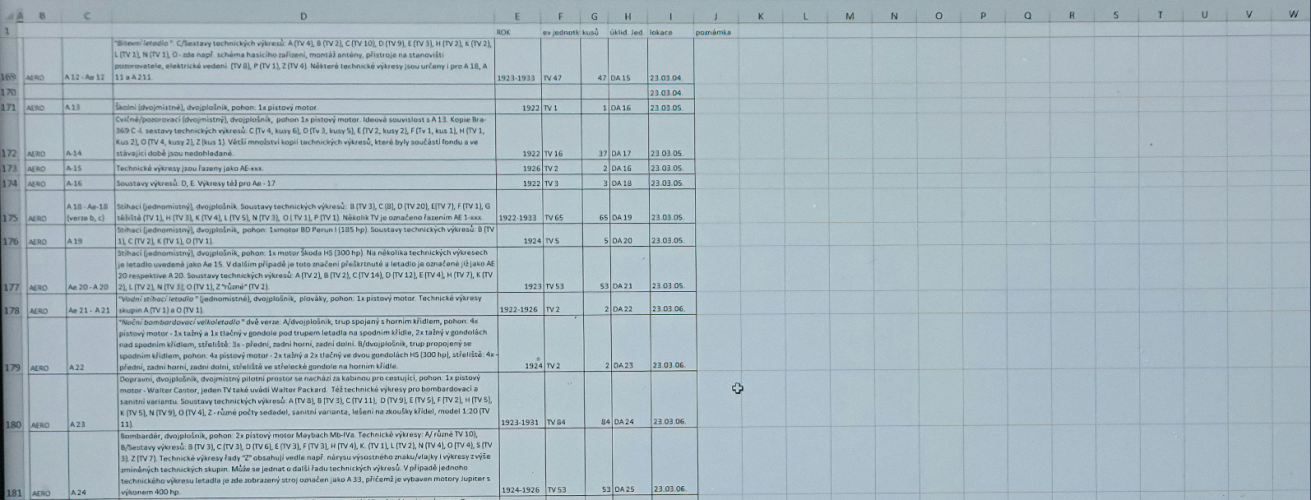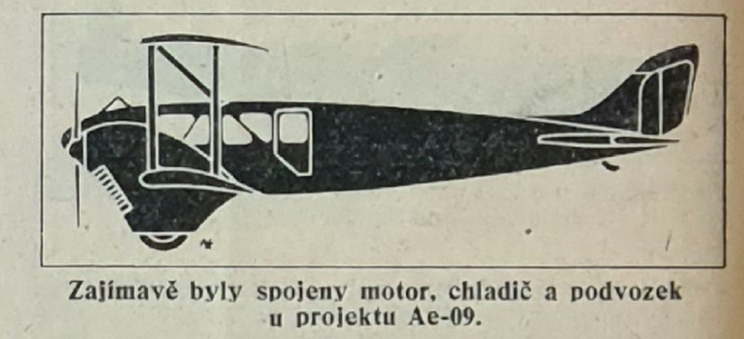- Joined
- 26 May 2006
- Messages
- 34,922
- Reaction score
- 15,794
Hi,
that great company has many aircraft and projects,and I hope you help
me in this list;
Ae.1 two seat military trainer biplane built in 1919
Ae.2 single seat fighter biplane,the first fighter designed and built in Czechoslovakia
Ae.3 two seat military recce aircraft,powered by one 180 hp Hispano-Suiza 8Aa engine
Ae.4 single seat fighter biplane,developed from Ae.2,not successful.
Ae.5 was a two-seat high altitude biplane fighter project,based on Ae.3,
powered by one Lorraine engine
Ae.6 was a high-wing twin boom light transport monoplane project,could
carry six passenger and crew of two,powered by two 260 hp Maybach engines,
mounted in push-pull configuration
Ae.7 was a 3/4 seat light transport biplane aircraft of 1921,powered
by one pistone engine
A.8 biplane light transport aircraft,it had a cabin and four passenger
A.9 was to be a fighter with a BMW 185 engine, a further development
of the A4 aircraft,project
A.9/II was a transport biplane project of 1921,could carry eight passenger
in comfortable cabin and one pilot in open cockpit at the bow,powered
by two Maybach engines,span 20.5m,length 12m and this idea was also used
for a Bomber aircraft with the same shape of the fuselage and engine nacelles, but with only one cantilevered wing. This project, for which had Est. maximum speed of 190 km/h
A.10 biplane light transport aircraft,entered service and instead off A.8
A.11 two seat light bomber and recce aircraft
Ab.11 light bomber version of A.11
A.12 two seat light bomber and recce biplane
A.13 two-seater biplane trainer for basic pilot training, powered by one piston engine
A.14 two seat military recce biplane,powered by one Hiero N engine
A.15 developed from A.14,but fitted with Hiero L engine
A.16 unbuilt project of single engined biplane night bomber,designed in 1926
A.17 single seat sailplane of 1922
A.18 single seat fighter biplane,powered by one 185 hp BMW IIIa engine
A.19 single seat fighter biplane,powered by one 170 hp engine,rejected in favour of A.18
A.20 single seat fighter biplane,powered by one 300 hp engine,also rejected in favour A.18
A.21 two seat night trainer biplane,a version of A.11
A.22 unbuilt project of heavy bomber biplane with four 300 hp Hispano-Suiza 8Fb engine,1924
A.22/II light civil transport biplane,version of A.11 with one pilot and two seat passenger
A.23 eight/nine seat civil transport biplane,powered by one 450 hp radial piston engine
A.24 twin engined night bomber biplane,built and it was powered by two 240 hp engines
A.25 two seat day trainer version of A.11,powered by one 185 hp engine
A.26 two seat military recce biplane,powered by one 185 hp BMW IIIa engine
A.27 a project for night bomber,based on A.24 but fitted with Bristol Jupiter engines
A.27/II re-allocated to 12 passenger airliner project,with two Lorraine-Dietrish 12Cc engines
A.28 two seat trainer aircraft,no more details
A.29 two seat military floatplane,a version of A.11
A.30 two sear long range recce and light bomber biplane,also based on A.11
A.31 single seat fighter biplane,powered by one engine,project only.
A.32 two seat army co-operation biplane,based on A.11 and powered by one 450 hp engine
A.33 14-seat airliner biplane project of 1928,powered by three radial piston engines
A.34 two seat sporting and touring biplane,powered by one 85 hp radial piston engine
A.35 high-wing six seat light civil transport monoplane,powered by one 240 radial piston engine
A.36 was a biplane bomber project of 1926,powered by three Bristol Jupiter engines
A.37 ------?
A.38 ten seat commercial transport biplane,powered by one 450 hp radial piston engine
A.39 ------?
A.40 was a project of racer biplane of 1926,the engine was Skoda L boosted up from 450 to 620 hp
A.41 ------?
A.42 single engined high-wing cantilever monoplane light bomber,with fixed landing gear
A.42c was a twin engined version of A.42,with two 500 hp Walter Merkur IV radial engines
A.43 ------?
A.44 was a project of heavy bomber monoplane of 1931,with two Praga Asso engines
A.45 ------?
A.46 two seat military trainer biplane,powered by one 300 hp water-cooled piston engine
A.47 was a tanden two-seat ultra-light low-wing monoplane project,intended
to compete Letov S-39 with A.49,powered by one 50 hp Orion,had span 10.6m,
length 7.2m and Est. speed of 145 km/h
A.48 was high-wing 8-seat monoplane airliner project of 1932,with three Walter Pollux engines
A.49 two seat parasol wing ultralight aircraft project,beaten by Letov S-39
A.50 was a high-wing transport monoplane project,based on Fokker F-VII,
could accommodate 14 passenger,with stretch fuselage and span 22.8m,
powered by three Walter Castor engines
A.51 ------?
A.52 was a high-wing medium transport monoplane project of 1932,powered
by four Walter Castor engines,mounted in nacelles under the wing,in two
pairs,which two motors mounted in push-pull configuartion,span 25m,length
17.5m and Est. speed of 220 km/h
A.53 ------?
A.54 was a tanden two-seat cantilevered low-wing sporting monoplane project
for 1938 competition,with all-wooden wings. The fuselage, welded from steel
tubes,powered by one Walter Minor 4 engine and a glazed cabin,span 9.5 m,
length 7.2 m, wing area 13.5 m2, empty weight 480 kg, in flight 710 kg, maximum speed 220 km/h, cruising 190. landing 68 km/h,range 4800 m
A.55 was anther ultralight project,a high-wing monoplane,powered by 50/60 hp Walter Polaris engine
A.56 ------?
A.57 ------?
A.58 ------?
A.59 ------?
A.60 passenger aircraft of 1933,first low-wing cantilever monoplane,with three Walter Castor engines
A.61 to A.99 probably not use
A.100 two seat long range recce biplane,powered by one 650 hp inline piston engine
A.101 two seat light bomber biplane,a version of A.100,powered by one 800 hp engine
Ab.101 two seat light bomber biplane,developed from A.101
A.102 single seat high gull wing monoplane fighter,powered by one 900 hp engine
A.103 ------?
A.104 two seat parasol wing light bomber monoplane
A.105 ------?
A.106 ------?
A.107 single seat lightweight fighter powered by one Walter Saggita engine
A.108 ------?
A.109 ------?
A.110 light aircraft (not sure)
A.111 developed from Ab.11,
A.125 two seat day trainer biplane,developed from A.25,but fitted with 180 hp engine
A.130 a version of A.30,but fitted with Walter-built 500 hp Bristol Jupiter VI engine
A.134 developed from A.34 but fitted with 130 hp engine
A.200 four seat low-wing cabin sporting monoplane,powered by one 200 hp radial piston engine
A.201 ------?
A.202 twin engined 14-seat cantilever low-wing monoplane airliner project,rival to Avia 57
A.203 ------?
A.204 twin engined eight passenger low-wing monoplane
A.205 ------?
A.206 twin engined light bomber and recce aircraft,based on A.204 with 800 hp engines
A.207 ------?
A.208 twin engined four seat multi purpose military aircraft project
A.209 ------?
A.210 a project looked like A.202 evolution,but with four 550 hp Walter inverted V12 engines
A.211 was a two seat trainer aircraft or Project,no more details
A.212 (1937),project was kind of Ae.45 precursor but with more conventional appearance,with
two Walter minor engines
A.230 developed from A.30 with divided main landing gear units,and one 490 hp engine
A.300 twin engined low-wing medium bomber,based on A.204
A.301 ------?
A.302 two seat low-wing fighter and ground attack monoplane project
A.303 ------?
A.304 a refind twin engined low-wing medium bomber version of A.300
A.321 attack version of A.32,with 450 hp engine for Finnish Air Force
A.330 a more powerful engine version of A.30,with 650 hp engine
A.351 developed from A.35,no more details
A.381 & A.382 a production versions of A.38
A.400 ------?
A.401 ------?
A.402 ------?
A.403 ------?
A.404 a project developed from A.304 as a bomber
A.430 one prototype of developed version of A.30,with 650 hp Avia Vr-36 engine
to be continued .....
that great company has many aircraft and projects,and I hope you help
me in this list;
Ae.1 two seat military trainer biplane built in 1919
Ae.2 single seat fighter biplane,the first fighter designed and built in Czechoslovakia
Ae.3 two seat military recce aircraft,powered by one 180 hp Hispano-Suiza 8Aa engine
Ae.4 single seat fighter biplane,developed from Ae.2,not successful.
Ae.5 was a two-seat high altitude biplane fighter project,based on Ae.3,
powered by one Lorraine engine
Ae.6 was a high-wing twin boom light transport monoplane project,could
carry six passenger and crew of two,powered by two 260 hp Maybach engines,
mounted in push-pull configuration
Ae.7 was a 3/4 seat light transport biplane aircraft of 1921,powered
by one pistone engine
A.8 biplane light transport aircraft,it had a cabin and four passenger
A.9 was to be a fighter with a BMW 185 engine, a further development
of the A4 aircraft,project
A.9/II was a transport biplane project of 1921,could carry eight passenger
in comfortable cabin and one pilot in open cockpit at the bow,powered
by two Maybach engines,span 20.5m,length 12m and this idea was also used
for a Bomber aircraft with the same shape of the fuselage and engine nacelles, but with only one cantilevered wing. This project, for which had Est. maximum speed of 190 km/h
A.10 biplane light transport aircraft,entered service and instead off A.8
A.11 two seat light bomber and recce aircraft
Ab.11 light bomber version of A.11
A.12 two seat light bomber and recce biplane
A.13 two-seater biplane trainer for basic pilot training, powered by one piston engine
A.14 two seat military recce biplane,powered by one Hiero N engine
A.15 developed from A.14,but fitted with Hiero L engine
A.16 unbuilt project of single engined biplane night bomber,designed in 1926
A.17 single seat sailplane of 1922
A.18 single seat fighter biplane,powered by one 185 hp BMW IIIa engine
A.19 single seat fighter biplane,powered by one 170 hp engine,rejected in favour of A.18
A.20 single seat fighter biplane,powered by one 300 hp engine,also rejected in favour A.18
A.21 two seat night trainer biplane,a version of A.11
A.22 unbuilt project of heavy bomber biplane with four 300 hp Hispano-Suiza 8Fb engine,1924
A.22/II light civil transport biplane,version of A.11 with one pilot and two seat passenger
A.23 eight/nine seat civil transport biplane,powered by one 450 hp radial piston engine
A.24 twin engined night bomber biplane,built and it was powered by two 240 hp engines
A.25 two seat day trainer version of A.11,powered by one 185 hp engine
A.26 two seat military recce biplane,powered by one 185 hp BMW IIIa engine
A.27 a project for night bomber,based on A.24 but fitted with Bristol Jupiter engines
A.27/II re-allocated to 12 passenger airliner project,with two Lorraine-Dietrish 12Cc engines
A.28 two seat trainer aircraft,no more details
A.29 two seat military floatplane,a version of A.11
A.30 two sear long range recce and light bomber biplane,also based on A.11
A.31 single seat fighter biplane,powered by one engine,project only.
A.32 two seat army co-operation biplane,based on A.11 and powered by one 450 hp engine
A.33 14-seat airliner biplane project of 1928,powered by three radial piston engines
A.34 two seat sporting and touring biplane,powered by one 85 hp radial piston engine
A.35 high-wing six seat light civil transport monoplane,powered by one 240 radial piston engine
A.36 was a biplane bomber project of 1926,powered by three Bristol Jupiter engines
A.37 ------?
A.38 ten seat commercial transport biplane,powered by one 450 hp radial piston engine
A.39 ------?
A.40 was a project of racer biplane of 1926,the engine was Skoda L boosted up from 450 to 620 hp
A.41 ------?
A.42 single engined high-wing cantilever monoplane light bomber,with fixed landing gear
A.42c was a twin engined version of A.42,with two 500 hp Walter Merkur IV radial engines
A.43 ------?
A.44 was a project of heavy bomber monoplane of 1931,with two Praga Asso engines
A.45 ------?
A.46 two seat military trainer biplane,powered by one 300 hp water-cooled piston engine
A.47 was a tanden two-seat ultra-light low-wing monoplane project,intended
to compete Letov S-39 with A.49,powered by one 50 hp Orion,had span 10.6m,
length 7.2m and Est. speed of 145 km/h
A.48 was high-wing 8-seat monoplane airliner project of 1932,with three Walter Pollux engines
A.49 two seat parasol wing ultralight aircraft project,beaten by Letov S-39
A.50 was a high-wing transport monoplane project,based on Fokker F-VII,
could accommodate 14 passenger,with stretch fuselage and span 22.8m,
powered by three Walter Castor engines
A.51 ------?
A.52 was a high-wing medium transport monoplane project of 1932,powered
by four Walter Castor engines,mounted in nacelles under the wing,in two
pairs,which two motors mounted in push-pull configuartion,span 25m,length
17.5m and Est. speed of 220 km/h
A.53 ------?
A.54 was a tanden two-seat cantilevered low-wing sporting monoplane project
for 1938 competition,with all-wooden wings. The fuselage, welded from steel
tubes,powered by one Walter Minor 4 engine and a glazed cabin,span 9.5 m,
length 7.2 m, wing area 13.5 m2, empty weight 480 kg, in flight 710 kg, maximum speed 220 km/h, cruising 190. landing 68 km/h,range 4800 m
A.55 was anther ultralight project,a high-wing monoplane,powered by 50/60 hp Walter Polaris engine
A.56 ------?
A.57 ------?
A.58 ------?
A.59 ------?
A.60 passenger aircraft of 1933,first low-wing cantilever monoplane,with three Walter Castor engines
A.61 to A.99 probably not use
A.100 two seat long range recce biplane,powered by one 650 hp inline piston engine
A.101 two seat light bomber biplane,a version of A.100,powered by one 800 hp engine
Ab.101 two seat light bomber biplane,developed from A.101
A.102 single seat high gull wing monoplane fighter,powered by one 900 hp engine
A.103 ------?
A.104 two seat parasol wing light bomber monoplane
A.105 ------?
A.106 ------?
A.107 single seat lightweight fighter powered by one Walter Saggita engine
A.108 ------?
A.109 ------?
A.110 light aircraft (not sure)
A.111 developed from Ab.11,
A.125 two seat day trainer biplane,developed from A.25,but fitted with 180 hp engine
A.130 a version of A.30,but fitted with Walter-built 500 hp Bristol Jupiter VI engine
A.134 developed from A.34 but fitted with 130 hp engine
A.200 four seat low-wing cabin sporting monoplane,powered by one 200 hp radial piston engine
A.201 ------?
A.202 twin engined 14-seat cantilever low-wing monoplane airliner project,rival to Avia 57
A.203 ------?
A.204 twin engined eight passenger low-wing monoplane
A.205 ------?
A.206 twin engined light bomber and recce aircraft,based on A.204 with 800 hp engines
A.207 ------?
A.208 twin engined four seat multi purpose military aircraft project
A.209 ------?
A.210 a project looked like A.202 evolution,but with four 550 hp Walter inverted V12 engines
A.211 was a two seat trainer aircraft or Project,no more details
A.212 (1937),project was kind of Ae.45 precursor but with more conventional appearance,with
two Walter minor engines
A.230 developed from A.30 with divided main landing gear units,and one 490 hp engine
A.300 twin engined low-wing medium bomber,based on A.204
A.301 ------?
A.302 two seat low-wing fighter and ground attack monoplane project
A.303 ------?
A.304 a refind twin engined low-wing medium bomber version of A.300
A.321 attack version of A.32,with 450 hp engine for Finnish Air Force
A.330 a more powerful engine version of A.30,with 650 hp engine
A.351 developed from A.35,no more details
A.381 & A.382 a production versions of A.38
A.400 ------?
A.401 ------?
A.402 ------?
A.403 ------?
A.404 a project developed from A.304 as a bomber
A.430 one prototype of developed version of A.30,with 650 hp Avia Vr-36 engine
to be continued .....
Last edited:


